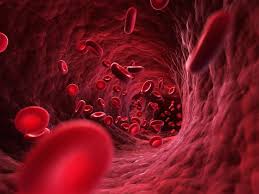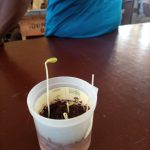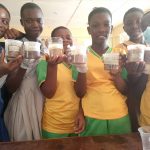AMAZING SCIENCE FACTS ABOUT THE HUMAN BLOOD
Blood is the life-giving fluid that delivers oxygen and other components to the cells of the body. It consists of red and white cells, platelets and these are suspended in liquid plasma matrix. It flows through vessels such as arteries, veins and capillaries. Here are some quick facts about the blood of living organisms:
- Blood comes in various colours: While humans have red coloured blood, other organisms such as spiders, octopuses and some arthropods have blue coloured blood. Some worms and leeches have green coloured blood. Some marine worms also have violet blood. Insects such as beetles and butterflies have bloods that are colourless or pale-yellowish. The colour of blood is determined by the type of respiratory pigment used in blood circulation. In humans, the pigment is called haemoglobin.
- There is gold in your blood: Human blood contains metal atoms including iron, chromium, manganese, zinc, lead and copper. It is important to note that the human body has about 0.2 mg of gold and it is found in the blood.
- White Blood Cells are important for pregnancy: Aswhite blood cells are known to promote a healthy immune system, they are also necessary for pregnancy to occur. A type of white blood cell called macrophages, which are prevalent in the reproductive tissues; assist in the development of blood vessels networks in the ovary. This activity is vital in the production of the hormone progesterone. Progesterone intend plays active role in the implantation of an embryo in the uterus. This means, low macrophage levels results in reduced progesterone amounts leading to higher unsuccessful embryo implantation.
- Coconut water and blood plasma are twins: With low amounts of plasma in the blood, coconut water can easily be a perfect replacement because they have similar compositions.
- The blood type impacts our general wellbeing: People with O blood type are not prone to cardiovascular diseases but are susceptible to skin cancer and obesity. Blood type A individuals stand the risk of high cholesterol levels in their body. Also, they are at risk of coronary heart disease development. People with blood type B are prone to diabetes and pancreatic cancer. While individuals with blood type AB are prone to memory and concentration losses. They stand at 82% higher risk of cognitive impairment than individuals of other blood types.
- Blood Cells have varying lifespan: Mature human blood cells have different life cycles. Red Blood Cells circulate in the body for about four months, Platelets last for about nine days and White Blood Cells range from a few hours to several days.
- Mosquitoes and the human blood: Although it is believed that, it will take the bites of 1.12 million mosquitoes to drain all the blood from an adult human, only female mosquitoes bite to obtain the necessary protein from blood so they can produce fertile eggs. Female mosquitoes produce 250 eggs from every successful bite.
- Blood is thicker than water: This old adage is true because, blood contains lots of proteins and cells which weigh considerably more than plain water.
Blood is very important to the existence of all mammals because the blood is a major transporter in the body. It carries food nutrients, electrolytes, hormones, vitamins, antibodies, heat and oxygen to the tissues and cells while transporting waste matter and carbon dioxide away rom the cells and tissues.
By: Saviour Okine






